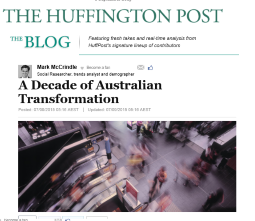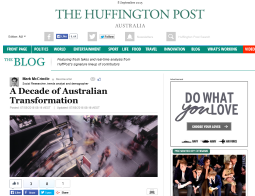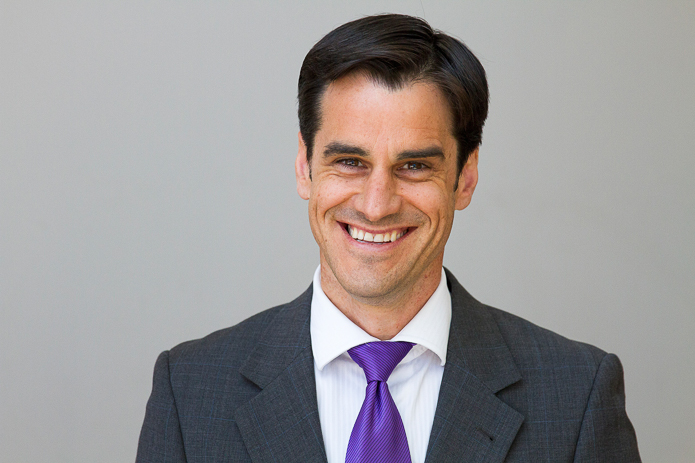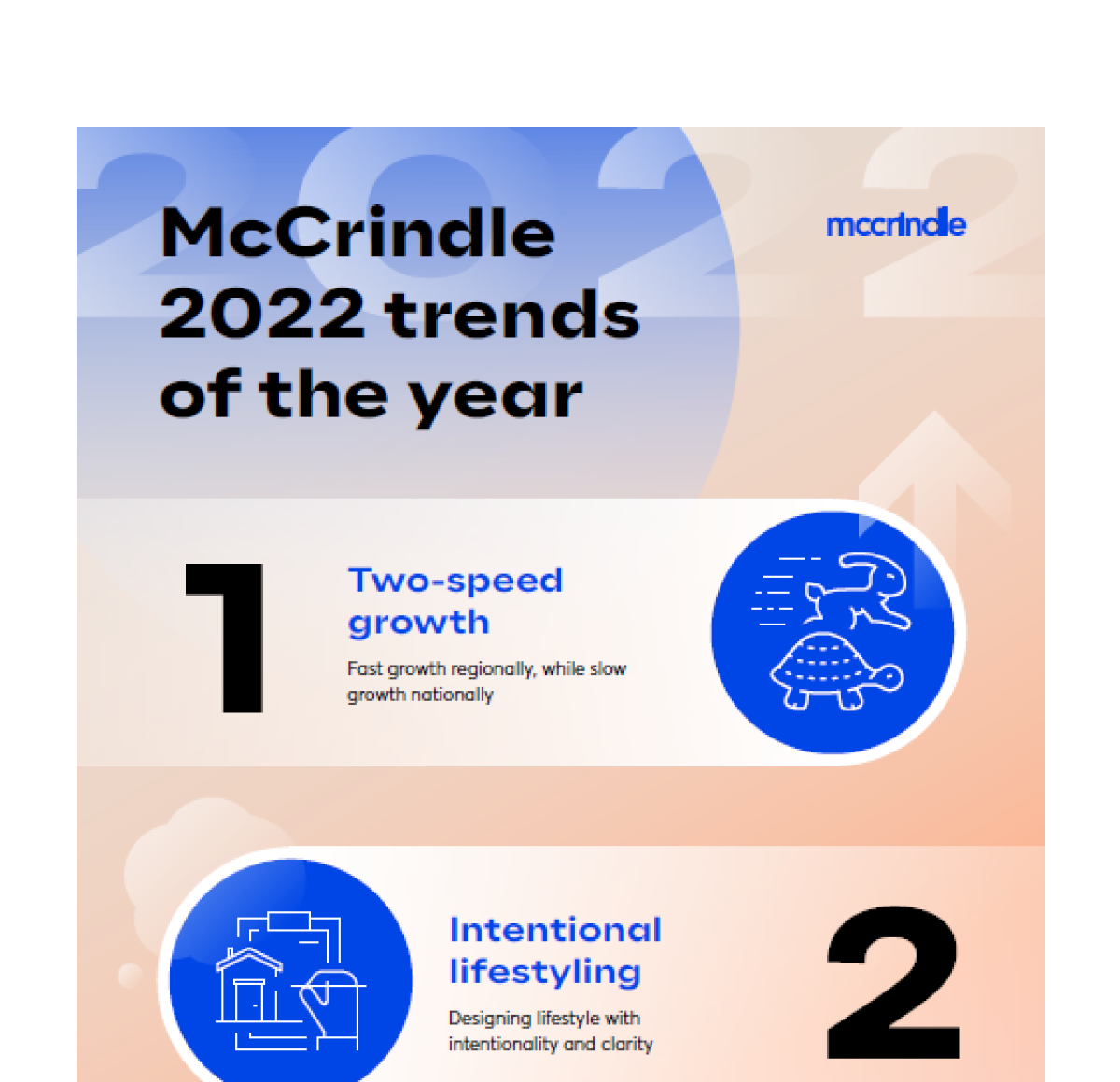A decade of Australian transformation

 Only occasionally in history do massive demographic changes combine with huge social shifts, ongoing generational transitions and unprecedented technological innovation so that within the span of a decade society altogether alters. Australia is currently in the midst of one such transformation.
Only occasionally in history do massive demographic changes combine with huge social shifts, ongoing generational transitions and unprecedented technological innovation so that within the span of a decade society altogether alters. Australia is currently in the midst of one such transformation.
Constant change can sometimes lead to change fatigue where the response can be to become worried about change, or equally negatively it can lead to change apathy which can create an indifference to change. However by understanding the emerging trends, we can be more prepared for the changes and so rather than becoming defensive or blasé we can confidently respond to the shifts and so remain ever-relevant.
5 Megatrends Reshaping Australia:
GROWING
While Australia’s population growth rate has recently slowed, we are still adding more than a million people every 3 years. Australia’s largest city, Sydney will also be the first Australian city to hit 5 million (by the end of 2016) however it is our second largest city, Melbourne which is growing the fastest and will take Sydney’s title in 2053 with both cities expected to reach a population of 8 million in 2055. In fact Melbourne is growing by more people every 5 days than the state of Tasmania adds in an entire year (1,400). Our third and fourth ranked cities will also change order over the next decades with Perth’s rate of growth set to see it overtake Brisbane in 2029 when they both reach a population of 3 million. While only these 4 cities currently exceed 2 million people, Adelaide will join the 2 million club but not until 2055, almost a century after Sydney reached this milestone in 1959.
MOVING
This population growth is leading to more densified living. While 3 in 4 households currently live in a detached home, almost half of all new housing approvals are in the unit, apartment or townhouse category. Australia’s communities are undergoing significant transformation from the horizontal suburbs to the growth of these vertical communities, and as people rent more, move more frequently, and transition across more communities than ever before. The average renter in Australia stays just 1.8 years per abode and even those who have bought a home are not putting their roots down deeply and staying for several decades like their parents did. Those with a mortgage stay on average just 8 years before they sell. While this growth, density and mobility is evident in the capital cities and larger coastal cities, Australia’s top 30 cities now include many inland regional cities that have a growth rate exceeding that of some of the capitals. It is the tree change and not just the sea change that rising capital city house prices is currently facilitating.
CHANGING
Cultural diversity is foundational to Australia- part of the DNA of our communities. More than 1 in 4 Australians was born overseas and almost half of all households (46%) have at least one parent born overseas. And our population mix is now more connected to our region with the top 7 countries of birth of Australians born overseas shifting in three decades from mainly European countries to now include China, India, Vietnam and the Philippines. There remains a deep affection for the traditional Aussie qualities of mateship, ironic humour and the larrikin spirit alongside the richness of our lifestyle which comes through the input of so many cultures. In a nation of world cities and global connectivity, gone is the cultural cringe, replaced with an international perspective that looks out not in.
AGEING
Three decades ago Australia’s average age had only just moved out of the 20’s to reach 30, today it exceeds 37 and in three more decades it will be 40. This ageing population though is a good news story- it means we are living longer, and consequently active later and able to work later in life than was previously the norm. In the last generation, Australians have added an average decade to their life expectancy at birth. Along with the ageing population goes an ageing workforce- which means that there are more generations in the workforce than ever before and leading teams in diverse times requires better people skills to bridge more gaps than ever before.
TRANSITIONING
Australia’s generations of Baby Boomers and Generation Xers are now sharing the leadership and workforce roles with the emerging Generations Y and Z. These new generations, born and shaped in the late 20th Century are increasingly becoming lifelong learners, multi-career workers with a focus on work-life balance, participative leadership models and a more varied job description. Along with this, the next generation of technology has, in less than a decade, transformed almost every area of business and consumer interactions. How we shop, where we get information from, when we connect and where we work from have all been fundamentally changed in this Wi-Fi-enabled, device-driven, app-based, social media-influenced decade.
While it is self-evident that every business, product or idea is just one generation away from extinction, such is the speed of change today, we are now just a decade or perhaps a few years away from this point. While such change impacts us all, those who understand the trends can drive the change and shape the future.
ABOUT MARK MCCRINDLE
Mark McCrindle is an award-winning social researcher, best-selling author, TedX speaker and influential thought leader, and is regularly commissioned to deliver strategy and advice to the boards and executive committees of some of Australia’s leading organisations.
Mark’s understanding of the key social trends as well as his engaging communication style places him in high demand in the press, on radio and on television shows, such as Sunrise, Today, The Morning Show, ABC News 24 and A Current Affair.
 His research firm counts amongst its clients more than 100 of Australia’s largest companies and his highly valued reports and infographics have developed his regard as a data scientist, demographer, futurist and social commentator.
His research firm counts amongst its clients more than 100 of Australia’s largest companies and his highly valued reports and infographics have developed his regard as a data scientist, demographer, futurist and social commentator.





